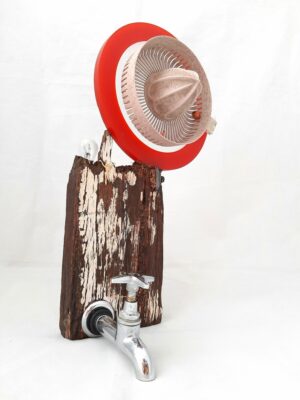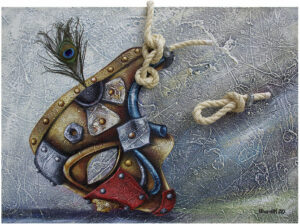Anthropophagism in Dutch Brazil: the cannibal Tapuias Indians

We refer to as Dutch Brazil the region that stretched from the São Francisco River in Bahia to Maranhão under the rule of Maurício de Nassau, between the years 1638 to 1654, also known as the Nassovian government.
In this period commonly referred to as the Dutch invasion, the objective of the Company of the West Indies to control the centers of sugar production through a naval blockade of the strongholds of the captaincy of Pernambuco stands out. As part of the Nassau expedition that landed on the Brazilian coast in 1637, the Dutch painter Albert Eckhout made, among other works, paintings of cannibalistic Indians called Tapuias, during his stay in Brazil.

Although there was no Tapuia ethnicity, this expression used by the Tupis and later appropriated by the Europeans, referred to a tribe identified as Tarairiu, with a fierce behavior and that did not integrate with the European way of life.
Their anthropophagic habits occur with the death of loved ones, who, instead of being buried, were cut or divided minutely and eaten raw or roasted. Their powdered bones were mixed with flour or other foods and their hair was dissolved in water and drunk by their relatives until the entire corpse was consumed. For these indigenous people, it was better to keep a friend inside their bodies than buried in the womb of the mother earth.
Little is known about the artist who portrayed these natives in loco, but a myth was created by legitimizing his paintings as reliable records and faithful representations of nature. This alleged ethno-historical accuracy is debatable, although Eckhout’s interest in reproducing the ferocity of these warriors is undeniable, giving up classical Renaissance beauty by showing imperfect bodies and ugly faces.
Obras em Destaque
By observing people, animals, plants and natural objects, Renaissance artists achieved descriptive and naturalistic characteristics through sophisticated techniques and representational skills while their art manuals recommended this concern. The Dutch’s exotic images shocked the European public and created new conventions later copied and adapted by other artists.
Habit books also established conventions for paintings about New World Indians, and some of the elements used by Albert Eckhout were already evident in sixteenth-century engravings.
However, the quality of this painter is not in the mastery of colors, nor in the use of perspective, much less in the application of learned canons, instead of focusing completely on the reproduction of the natural, but in the gigantic way in which the canvases abandoned the academicist model of representation. elegant and sculptural image of human bodies.
The large paintings that originally decorated the house of the Earl of Nassau were presented to King Frederic III of Denmark in the second half of the seventeenth century and are currently in the National Museum of Denmark.
By André D.X Luís Onishi








